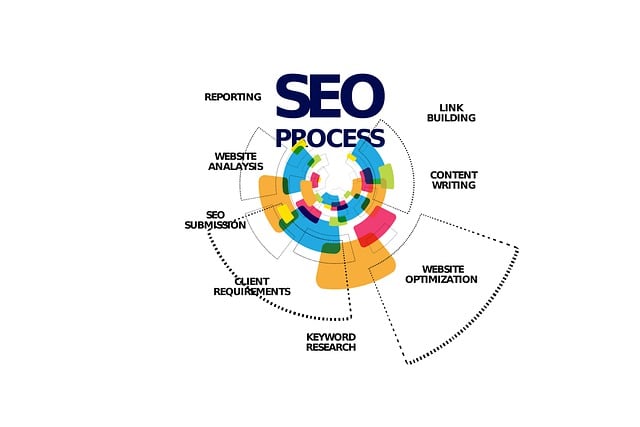Table of Contents
The Importance of Link Building in SEO
Link building plays a crucial role in the world of search engine optimization (SEO). It is a process of acquiring high-quality backlinks from other websites to one’s own site. These links are like votes of confidence from other websites, indicating that the content on the target website is valuable and trustworthy. The more quality backlinks a site has, the more authority it gains in the eyes of search engines.
Search engines, such as Google, consider these backlinks as one of the key ranking factors for determining the visibility and credibility of a website. When a site has a strong link profile, it is more likely to rank higher in search engine results pages (SERPs) and attract organic traffic. The importance of link building in SEO cannot be understated, as it establishes the trust and authority needed to compete in an increasingly competitive online landscape.
Understanding White Hat Link Building Techniques
White hat link building techniques are crucial for improving a website’s search engine rankings and attracting organic traffic. These techniques focus on creating high-quality, relevant, and authoritative links from reputable sources. One commonly used white hat technique is guest blogging, where website owners contribute informative and valuable content to other websites in exchange for a backlink to their own site. This not only helps in establishing credibility but also increases visibility to a wider audience.
Another white hat technique is the creation of compelling and shareable content, such as blog posts, infographics, or videos. When websites discover this valuable content, they are more likely to link back to it, boosting the website’s authority and visibility. Additionally, white hat link building techniques involve conducting outreach to other website owners, requesting them to share and link to the website’s content if they find it relevant and valuable to their audience. Building relationships through outreach is a slow but effective way to gain backlinks organically and ethically.
Exploring Black Hat Link Building Techniques
Black hat link building techniques are unethical strategies used to artificially manipulate search engine rankings. These practices often go against the guidelines set by search engines, and can result in severe consequences for website owners. One example of a black hat technique is buying or exchanging links with other websites solely for the purpose of increasing backlink count. This method aims to create an illusion of popularity and authority, without providing any genuine value to users. Additionally, black hat practices may include keyword stuffing, hiding links or text from users, and creating irrelevant or low-quality content solely for the purpose of generating backlinks.
Engaging in black hat link building can lead to severe penalties from search engines. Websites that are caught using such tactics may experience a drop in rankings, loss of organic traffic, or even complete removal from search engine results. Additionally, search engines continuously update their algorithms to identify and penalize websites employing black hat techniques. These updates strive to improve the user experience by providing more accurate and relevant search results. As a result, it is becoming increasingly difficult for websites using black hat strategies to maintain long-term success in search engine rankings.
The Pros and Cons of White Hat Link Building
White hat link building techniques have numerous advantages when it comes to improving a website’s visibility and reputation. One of the main benefits is the long-term sustainability it offers. By focusing on creating high-quality, relevant content and securing backlinks from authoritative sources, white hat link building ensures that a website’s online presence remains strong over time. These organic links not only help to drive organic traffic, but they also contribute to higher search engine rankings, which in turn can result in increased brand recognition and credibility.
Moreover, white hat link building aligns with search engine guidelines and ensures compliance with ethical practices. This means that websites that prioritize white hat strategies are less likely to face penalties or be banned from search engine results pages. By steadily building a network of genuine links, webmasters can establish a solid foundation for sustained growth and success. However, one disadvantage of white hat link building is that it requires a significant investment of time and effort. Building relationships with industry influencers, creating valuable content, and reaching out for guest posting opportunities can be time-consuming tasks. Additionally, the results of white hat link building can take longer to become apparent compared to black hat techniques, which offer faster but short-lived gains.
The Risks and Consequences of Black Hat Link Building
Black hat link building techniques may seem tempting for quick SEO gains, but the risks and consequences associated with this approach can be severe. One of the major risks is the potential for penalties from search engines. When search engines detect black hat tactics such as spammy link profiles or paid links, they can penalize a website by lowering its organic ranking or even removing it from search results altogether.
Additionally, engaging in black hat link building can damage a website’s reputation. When a website is associated with manipulative tactics, it undermines its credibility and trustworthiness. This can lead to a loss of user confidence and a decrease in organic traffic. Furthermore, if a website is caught using black hat techniques, it can suffer long-term consequences such as a tarnished brand image and difficulty in recovering from the penalties imposed by search engines.
Best Practices for White Hat Link Building
White hat link building is an essential element of any successful SEO strategy. It involves acquiring backlinks from reputable and relevant websites through ethical means. When done correctly, white hat link building can improve a website’s search engine rankings, increase organic traffic, and enhance overall online visibility.
To effectively practice white hat link building, it is crucial to focus on creating high-quality content that others naturally want to link to. This means producing informative and valuable articles, blog posts, infographics, videos, and other types of content that resonate with the target audience. By consistently delivering helpful and engaging material, website owners can increase the likelihood of other reputable websites linking back to their content. Additionally, engaging in outreach campaigns, guest blogging, and fostering relationships with influencers in the industry can also help in acquiring organic and high-quality backlinks. Overall, an emphasis on creating valuable content and fostering genuine connections is key to successful white hat link building.
Unethical Tactics Used in Black Hat Link Building
Black hat link building techniques are known for their unethical nature and attempts to manipulate search engine rankings. These tactics focus on tricking search engines into artificially boosting a website’s visibility, disregarding guidelines set by search engines like Google. One common black hat tactic includes the use of link farms, which are networks of websites designed solely for the purpose of generating backlinks for other sites. These link farms offer little to no value to users and are purely created to deceive search engines.
Another unethical tactic employed in black hat link building is the use of hidden text or links. This involves adding text or links on a webpage that are invisible to users but can be seen by search engine crawlers. By doing this, websites aim to increase keyword relevance and manipulate search rankings without providing any valuable content to visitors. These tactics not only go against search engine guidelines but also jeopardize the credibility and reputation of the websites utilizing them.
How Search Engines Differentiate Between White Hat and Black Hat Techniques
There are several ways that search engines differentiate between white hat and black hat techniques. One of the most important factors is the quality and relevance of the links. Search engines like Google have complex algorithms that analyze the links pointing to a website. In white hat link building, the emphasis is on acquiring high-quality backlinks from reputable and authoritative websites. These links are earned naturally through valuable content, guest blogging, and outreach efforts. On the other hand, black hat link building involves low-quality or spammy links that are often purchased or obtained through manipulative tactics.
Another factor that search engines consider is the overall user experience of a website. White hat techniques prioritize the user and aim to create a positive and seamless experience. This includes factors like fast page load times, easy navigation, and mobile-friendliness. Black hat techniques, on the other hand, commonly focus on shortcuts and quick gains without regard for user experience. This can include tactics like keyword stuffing, hidden text, and doorway pages, which can all lead to a poor user experience and decrease a website’s visibility in search engine results. By analyzing these and other factors, search engines are able to differentiate between white hat and black hat techniques and adjust their rankings accordingly.
• Quality and relevance of links: White hat techniques focus on acquiring high-quality backlinks from reputable websites, while black hat techniques involve low-quality or spammy links.
• User experience: White hat techniques prioritize creating a positive user experience with factors like fast page load times, easy navigation, and mobile-friendliness. Black hat techniques often neglect user experience in favor of quick gains.
• Content value: White hat techniques emphasize valuable content creation and guest blogging to earn natural backlinks. Black hat techniques may use manipulative tactics like keyword stuffing or hidden text.
• Transparency: White hat techniques are transparent and follow search engine guidelines, while black hat techniques often try to manipulate search engines through deceptive practices.
• Long-term sustainability: White hat techniques aim for long-term success by building a strong online presence based on trust and authority. Black hat techniques may lead to short-term gains but can result in penalties or loss of visibility over time.
By taking these factors into account, search engines are able to differentiate between white hat and black hat SEO practices and adjust their rankings accordingly.
The Future of Link Building: Ethical Approaches
To stay ahead in the ever-evolving world of SEO, it is essential to embrace ethical approaches to link building. As search engines become more sophisticated, they are placing increasing importance on the quality and relevance of links. This means that simply obtaining a large number of backlinks is no longer effective in boosting your website’s ranking. Instead, the focus should be on building relationships, offering valuable content, and engaging with your target audience.
One of the key ethical approaches to link building is through the creation and promotion of high-quality content. By consistently publishing informative and valuable content on your website, you can attract natural backlinks from other authoritative sources. This not only helps to improve your website’s visibility in search engine results but also establishes your credibility as a thought leader in your industry.
Additionally, ethical link building involves engaging with your audience and building relationships with other reputable websites. This can be done through guest blogging, where you contribute insightful content to other relevant websites in exchange for a backlink. Collaborating with others in your industry not only helps to expand your network but also strengthens your online presence.
In the future, as search engines continue to prioritize user experience and authenticity, ethical link building will likely remain a crucial element in any successful SEO strategy. By focusing on quality over quantity and fostering genuine connections, businesses can build a sustainable link building strategy that not only boosts their organic search rankings but also enhances their reputation in the online world.
Tips for Creating a Sustainable Link Building Strategy
A sustainable link building strategy is crucial for long-term success in SEO. To create a sustainable strategy, it is important to focus on quality rather than quantity when it comes to building links. Instead of simply trying to acquire as many links as possible, prioritize obtaining high-quality, relevant backlinks that come from reputable sources. This approach not only helps to improve your search engine rankings but also ensures that your website is associated with trustworthy and authoritative sites, which can boost your online reputation.
Additionally, diversifying your link profile is key to a sustainable strategy. Instead of relying solely on one type of link source, such as guest posting or directory submissions, consider exploring various avenues to acquire backlinks. This could include outreach to influencers or industry experts, collaborating on content with other websites, or even earning natural links through the creation of valuable and shareable content. By diversifying your link building efforts, you not only enhance your chances of acquiring high-quality links but also reduce the potential risks associated with relying heavily on a single source.


